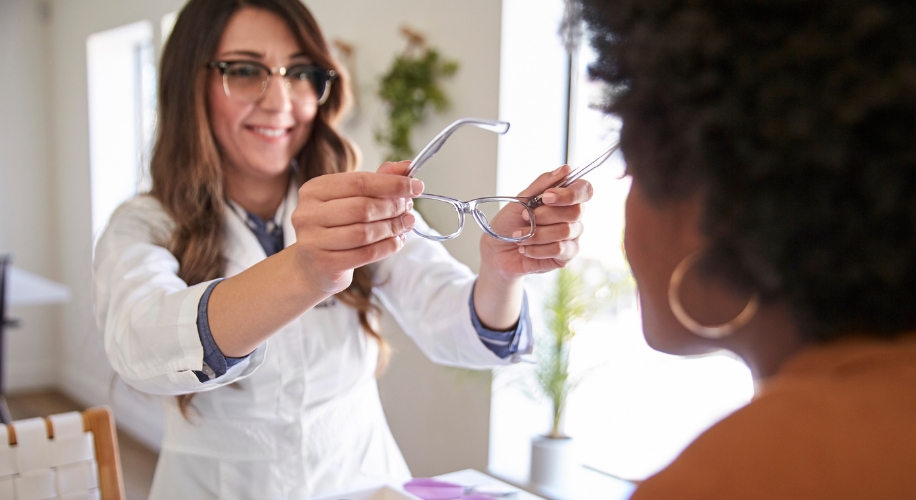What Do I Do About My Astigmatism?: Vision Correction for Astigmats
- BY Catherine Ong
- IN Eye Health
Astigmatism is a refractive condition where light bends irregularly through the structures in your eyes and focuses at different points in your eye. While some individuals with low astigmatism may choose to forgo correction, adding an astigmatism correction to your glasses may help enhance your visual comfort and clarity. In this blog post, we’ll explore the common question—what do I do about my astigmatism?

Do I Have to Correct My Astigmatism?
The first question people usually ask when I say they have astigmatism is, “Do I HAVE to correct my astigmatism?” There are many people who have low to moderate amounts of astigmatism and can go their whole lives without being bothered.
While a low, uncorrected astigmatism typically does not cause any visual problems, it can lead to decreased clarity which can affect daily life including work and driving. For those with high astigmatism, especially children, it is recommended to get as much astigmatism correction as tolerated. This is because during development, the eye and brain are still creating connections. Blurred vision due to astigmatism can lead to long term decreased vision called amblyopia.
Shop These Zenni Frames
Exploring Your Options
Unlike nearsightedness (myopia) or farsightedness (hyperopia), astigmatism arises from an irregular shape of the cornea or lens, causing light to focus at two different points on the retina instead of a single point. While astigmatism may sound complex, various effective correction options are available to enhance your vision and alleviate associated symptoms.
Prescription Eyeglasses:
- “Regular Astigmatism” where refracted light comes to two points in your eye is commonly corrected with glasses. If your doctor has prescribed a glasses prescription with a number under the “cylinder” or “cyl” category, you have astigmatism.
- “Irregular Astigmatism” where refracted light focuses to more than 2 points in your eye is not as easily corrected with glasses. Glasses can correct a portion of your irregular astigmatism, but most likely will not correct all of it.
Contact Lenses:
- Soft Contact Lens: Soft toric contact lenses address astigmatism by providing clear vision and comfortable wear. Compared to spherical lenses, it is important to examine how the toric contact lenses rotate on your eye to give you optimal vision. This is determined by doing a contact lens fitting with your optometrist.
- Specialty Contact Lens: For people with certain eye conditions such as keratoconus, specialty contact lenses such as scleral lenses can help mitigate the effect of high or irregular astigmatism.
Refractive Surgery:
- LASIK or PRK: For those seeking a more permanent solution, refractive surgeries like LASIK or PRK can reshape the cornea to correct astigmatism. This can be done by your local refractive surgeon who will do multiple tests to ensure you get the most precise correction.

Photo from Pexels by Nataliya Vaitkevich
Addressing astigmatism is crucial for maintaining optimal vision, but does not always need to be corrected. Fortunately, effective correction options such as prescription eyeglasses, contact lenses, and refractive surgeries exist. It is best to consult your optometrist about whether prescription glasses with astigmatism would be right for you. If you’re considering correcting your astigmatism with stylish and affordable frames, check out Zenni Optical.


